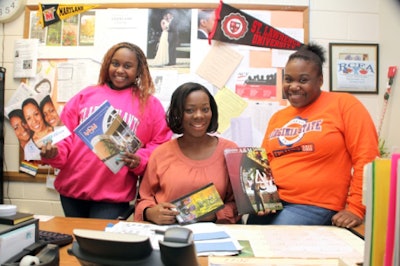 The ‘matching’ concept aims to pair college-bound students with the school that will be the best academic fit.
The ‘matching’ concept aims to pair college-bound students with the school that will be the best academic fit.WASHINGTON – The conversation around increasing degree attainment often focuses on helping more students from disadvantaged backgrounds get prepared for and admitted to college. But at a recent forum on Capitol Hill, the conversation shifted toward a more nuanced aspect—helping students gain admittance to the college that represents the best academic fit.
The concept is known as “match.”
During an American Youth Policy Forum event titled “College Match Matters,” Dr. Crystal Byndloss, Senior Research Associate at MDRC, presented data from the College Match Program Model in Chicago, an intervention meant to combat the problem of “undermatching”—that is, students enrolling in colleges that are less selective than the kind they are qualified to enter.
As a result of undermatching, research has shown that more students drop out of college than would otherwise because they are not being challenged, Byndloss and other panelists said.
“The bigger the challenge, the more likely you are to succeed. That’s not intuitive,” said Michael McPherson, president of the Spencer Foundation and co-author of the 2009 critically acclaimed book “Crossing the Finish Line: Completing College at America’s Public Universities.”
“You would think, ‘If I want to graduate, I’ll go to the easiest school I can find,” McPherson said. “It doesn’t work that way.”
“If you’re strong and go to a more challenging place, you’ll do better. If you’re weak and go to a more challenging place, you’ll do better,” he added.
MDRC worked with McPherson and the other “Crossing the Finish Line” authors, as well as the Consortium on Chicago School Research, to develop an intervention that could be tested in public schools that serve students from low-income families, according to an MDRC brief titled “Make Me a Match: Helping Low-Income and First-Generation Students Make Good College Choices.”
According to the brief, “the goal was to design a school-based program that could proactively deliver crucial information and help students and parents make thoughtful decisions about college enrollment.”
Using “near peers”—that is, recent college graduates—the program sought to help high school students through information-sharing, awareness-building, individualized advising and application support. Emphasis was also placed on parental engagement, decision-making and planning ahead.
“Half the time I would tell the students, ‘the stuff I’m teaching you, no one told me,’” said Mariana Saucedo, a 2010 graduate of Grand Valley State University, who now works as a College Match Advisor at DeVry Advantage Academy High School and Lincoln Park High School in Chicago.
“We really are able to work intensely with the student to get them where they have to go,” Saucdeo said, explaining that the work ranges from help with filling out applications to writing admissions essays. “There’s strong follow-up to make sure they do what we ask them to do.”
The initiative targeted students who had a 3.0 GPA or higher and an ACT score of 20 or higher, and ultimately reached 75 to 100 students in three pilot schools.
The idea behind reaching out to high-achieving students was to concentrate on the “low-hanging fruit” and helping such students choose a better “match” college in order to learn how to serve larger student populations in the future, the MDRC brief stated.
A “match list” of selective colleges and universities in the region was used to help students identify colleges that might represent a good academic fit.
According to the slides Byndloss presented, over time, more students were likely to apply to selective colleges. For instance, in 2011, 23 and 41 percent of students in the pilot schools applied to the most competitive and highly competitive colleges, versus 17 and 38 percent the previous year, respectively.
The slides also showed that acceptance rates continued to go up in the College Match schools versus comparison schools, although Byndloss said she did not know why the comparison schools experienced a dip in acceptance rates.
Byndloss said the pilot program in Chicago is set to expand to New York this fall. Possible next steps include seeing if the program can be expanded in other contexts, incorporating technology into advising services and training existing college advising staff on match.
Greg Darnieder, Senior Advisor to the Secretary on the College Access Initiative at the U.S. Department of Education, said part of the problem with school-based counselors is that most have not been formally trained to do college advising.
“One of the key challenges we have is very few of the 10,000 counselors we have in this country have had a course on how to do college access,” Darnieder said. “We have a workforce that gets hired to do this work but hasn’t been trained to do it.”
Jamaal Abdul-Alim is a 2013-14 Spencer Education Journalism Fellow at Columbia University.



















